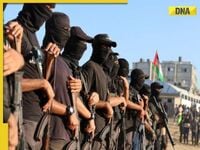Tensions flared once again in the Gaza Strip this weekend as the United States publicly warned that Hamas may be preparing an assault on Palestinian civilians, a move that Washington says would violate the hard-won ceasefire and jeopardize ongoing mediation efforts. The warning, issued by the US State Department on October 18, 2025, was relayed to key regional partners including Qatar, Turkey, and Egypt—nations that have served as guarantors of the fragile truce between Hamas and Israel.
According to Reuters and France 24, the State Department’s statement was blunt: "This planned attack against Palestinian civilians would constitute a direct and grave violation of the ceasefire agreement and undermine the significant progress achieved through mediation efforts." The US did not provide specific details about the alleged plot, but emphasized that any such attack would prompt measures to protect civilians and preserve the ceasefire’s integrity.
Hamas, for its part, wasted no time in rejecting the accusation. In a statement released on Sunday, October 19, the Palestinian militant group dismissed the US warning as "misleading Israeli propaganda" and called on Washington to stop "repeating the occupation’s misleading narrative." According to FRANCE 24, Hamas went further, accusing Israeli authorities of forming, arming, and funding criminal gangs responsible for murders, kidnappings, and looting across Gaza. "The facts on the ground reveal the exact opposite," the group asserted, alleging that these gangs were responsible for "killings, kidnappings, theft of aid trucks, and assaults against Palestinian civilians."
Hamas insisted that its police forces were merely fulfilling their duty by pursuing these gangs to hold them accountable. The militant group’s statement emphasized, "The movement calls on the US administration to stop repeating the occupation’s misleading narrative and to focus on curbing its repeated violations of the ceasefire agreement."
The US warning comes at a particularly volatile moment. Just days earlier, Hamas had tightened its grip on Gaza’s devastated cities, launching a sweeping crackdown on suspected collaborators and rival factions. According to video footage released on Hamas’s official channels and cited by AP and AFP, eight blindfolded and kneeling suspects were executed in public on the evening of October 13, 2025. The suspects were branded as "collaborators and outlaws," and their execution was broadcast widely—a chilling reminder of the ongoing lawlessness and deep mistrust within the enclave.
Reports from Reuters indicate that Hamas-led fighters clashed with at least two armed groups in eastern Gaza City, which Hamas alleges are involved in looting aid and collaborating with Israel. These confrontations, and the public executions that followed, have drawn international condemnation and raised concerns about the militant group’s methods of maintaining control.
Meanwhile, the ceasefire agreement itself remains on precarious footing. Brokered last week by the Trump administration, the deal saw Israel agree to end its military offensive in Gaza in exchange for the release of hostages taken during the October 7, 2023, Hamas attack. The first phase of the agreement involves a prisoner-hostage exchange and the resumption of humanitarian aid to Gaza’s battered population.
But implementation has been anything but smooth. Israeli Prime Minister Benjamin Netanyahu announced on October 18 that the Rafah border crossing between Gaza and Egypt would remain closed until Hamas returns the bodies of deceased Israeli hostages. This decision came just hours after the Palestinian embassy in Egypt announced that the Rafah crossing would reopen on Monday, October 20, for entry into Gaza. The dispute over the return of bodies and the flow of life-saving aid underscores just how fragile the ceasefire truly is.
President Donald Trump, whose administration brokered the ceasefire, added further fuel to the fire with a stark warning posted on his Truth Social network earlier in the week. "If Hamas continues to kill people in Gaza, which was not the Deal, we will have no choice but to go in and kill them," Trump declared, though he did not specify who he meant by "we." The comment, reported by AP and France 24, has only heightened anxieties among Palestinians and observers alike.
Washington’s warning also comes amid reports that the US and Israel are exploring the creation of safe zones inside Gaza for civilians seeking refuge from possible Hamas retaliation. While Israeli officials have not yet publicly confirmed these plans, US sources told AP that the idea is under discussion as a means to protect noncombatants and maintain some semblance of order amid the chaos.
The US has made it clear that it intends to work closely with mediators to uphold calm and promote security for Palestinians and the broader region. "Should Hamas proceed with this attack, measures will be taken to protect the people of Gaza and preserve the integrity of the ceasefire," the State Department warned. However, the statement stopped short of spelling out what those measures might entail, leaving many in the region guessing about the next steps.
For its part, Hamas continues to insist that it is not violating the ceasefire. Instead, the group says it is acting to restore order in Gaza by cracking down on criminal elements—elements it claims have been fostered by Israeli authorities. The group’s narrative is that the real threat to Palestinian civilians comes not from Hamas itself, but from these gangs, which it accuses of "theft of aid trucks, killings, kidnappings, and assaults."
Israel and Hamas have been trading accusations of ceasefire violations for days, each side blaming the other for any breakdown in the truce. The current dispute over the Rafah crossing and the return of hostages’ bodies is just the latest in a series of hurdles that threaten to unravel the peace process. The ceasefire deal itself is part of a broader 20-point plan put forward by the Trump administration aimed at ending the war and creating a framework for lasting peace.
As part of the agreement, Hamas released all 20 living Israeli hostages it had been holding for two years, in exchange for nearly 2,000 Palestinian detainees and convicted prisoners held in Israeli jails, according to France 24. But the fate of the deceased hostages, the continued closure of the Rafah crossing, and the persistent violence on the ground have all cast doubt on whether the ceasefire can hold.
The coming days will be critical. With the US warning hanging over the situation and both sides trading blame, the eyes of the world remain fixed on Gaza. Whether the ceasefire can survive these latest challenges—or whether the region will slide back into violence—remains to be seen.
For now, uncertainty reigns, and ordinary Palestinians are left to hope that diplomacy and restraint will prevail over further bloodshed.




